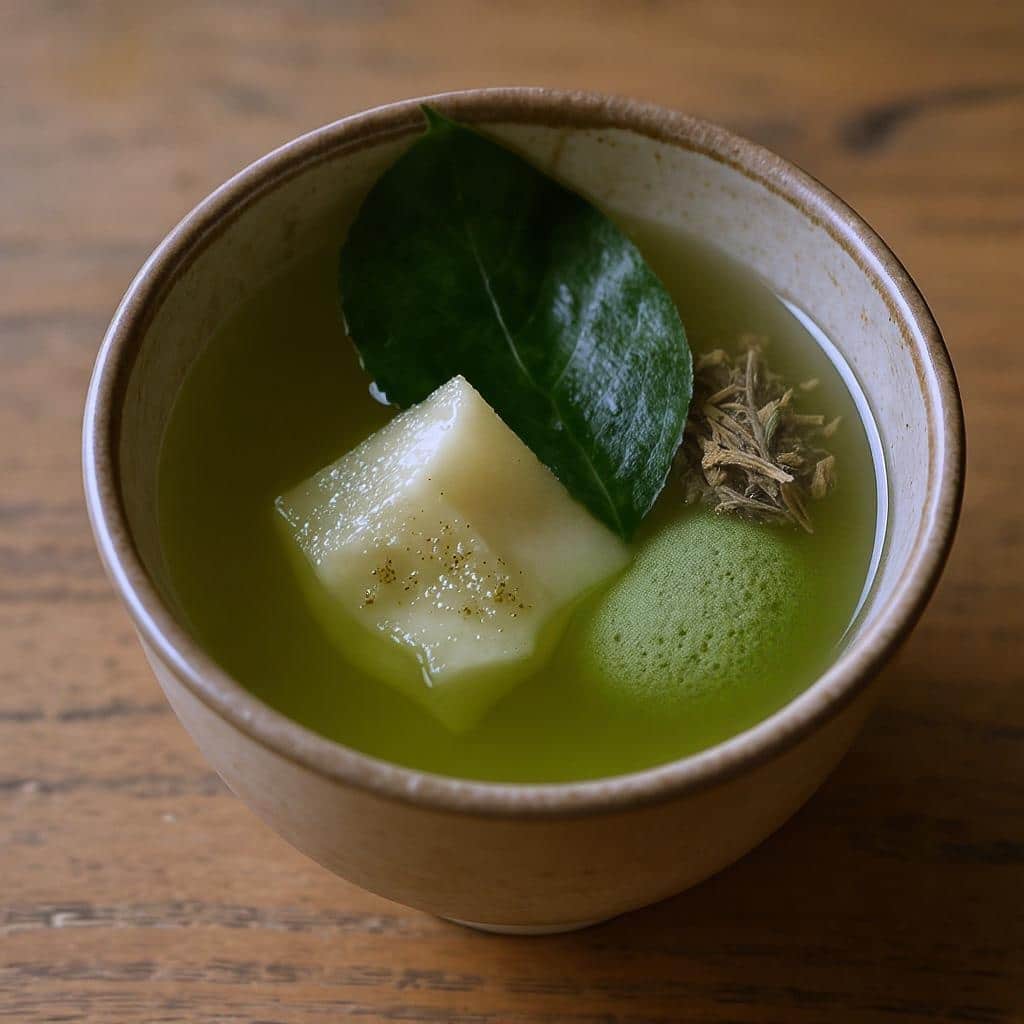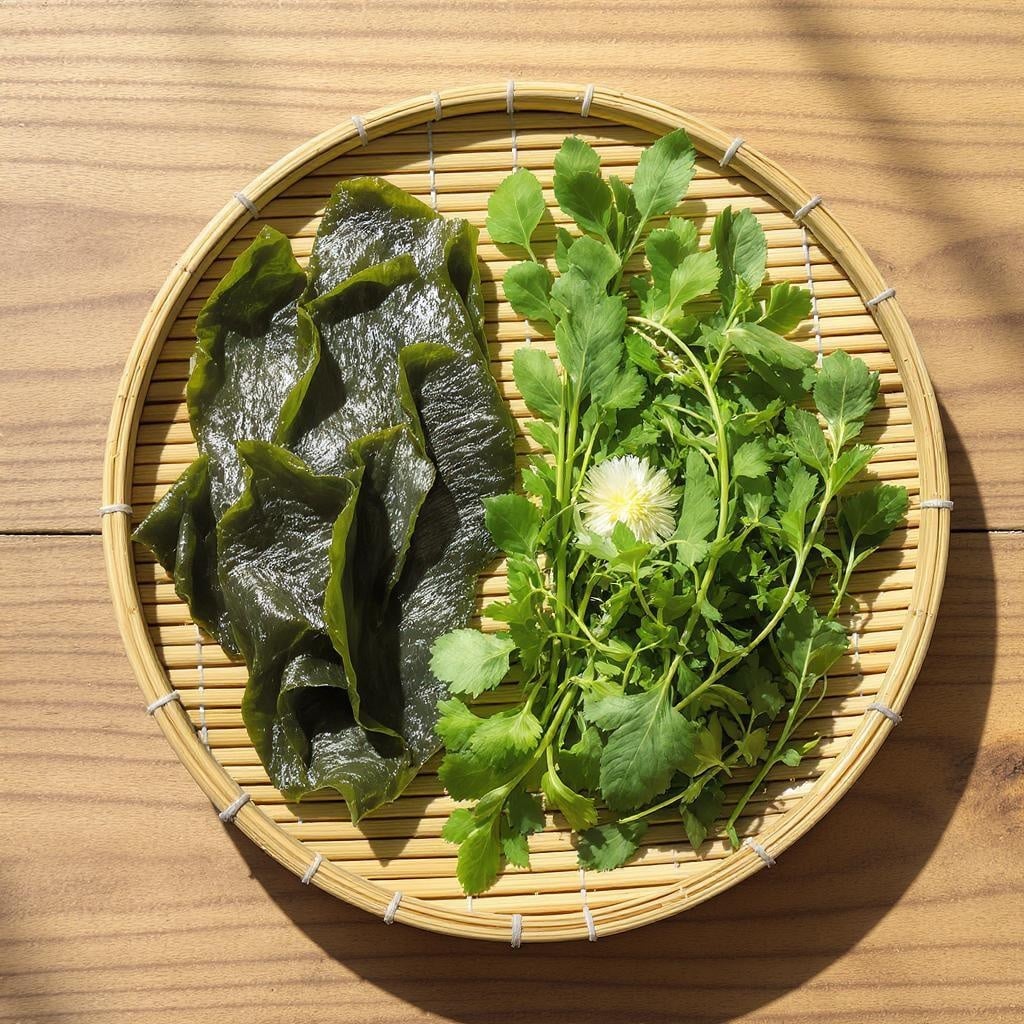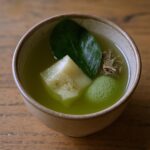In recent years, the buzz around the Japanese Mounjaro tea recipe has taken the health and wellness world by storm. This natural infusion — rooted in Japanese tradition — is said to support fat burning, ease digestion, and energize the body using a combination of herbs.
But what’s really behind this tea’s popularity? Is it all hype, or does this Japanese Mounjaro tea recipe live up to its weight-loss reputation?
In this article, we’ll explore the origins, ingredients, and proven benefits of brewing this powerful drink at home. You’ll also find answers to top questions like “What do the Japanese put in their tea?” and how this version compares with the Brazilian 3-ingredient alternative.
And if you’re curious about the full Japanese Mounjaro recipe, don’t miss our dedicated guide: Discover the full Japanese Mounjaro Recipe here.

Table Of Contents
Table of Contents
Understanding the Hype Around Japanese Mounjaro Tea
What Is Japanese Mounjaro Tea?
The Japanese Mounjaro tea recipe is known as a natural detox blend designed to promote metabolism and overall well-being. While the phrase “Mounjaro” isn’t originally Japanese, this formula is inspired by traditional teas made with ingredients like green tea leaves, shiso, and fermented herbs.
Unlike regular matcha or sencha, the Japanese Mounjaro tea recipe is often enhanced with natural boosters aimed at supporting weight management. It’s gained global appeal as a holistic alternative to synthetic fat-burning pills.
Origin and Cultural Significance in Japan
Tea culture in Japan goes back centuries. Beyond taste, teas were functional — aiding digestion, healing inflammation, and refreshing the mind. Elements like kombu, fermented rice, and antioxidant-rich greens were the foundation of many traditional Japanese blends.
Although the exact term “Mounjaro tea” is modern, it reflects the historical focus on healing through functional Japanese herbal teas — and today’s enthusiasts are now rediscovering these ancient remedies through blends like the Japanese Mounjaro tea recipe.
Ingredients Used in Mounjaro Tea Recipes

Traditional Japanese Herbs Commonly Used
To understand the full value of a Japanese Mounjaro tea recipe, we need to break down the traditional ingredients used in Japanese herbal teas — especially those that support detoxification, metabolism, and digestion.
Here are some of the most common natural components:
| Ingredient | Benefits | Common Form |
|---|---|---|
| Shiso Leaf | Anti-inflammatory, reduces bloating | Fresh or dried |
| Kombu | Rich in iodine, supports thyroid | Dried kelp strips |
| Green Tea | Antioxidants, boosts fat oxidation | Loose leaves |
| Yomogi (Mugwort) | Enhances digestion, fights fatigue | Powdered or whole |
| Umeboshi | Alkalizes body, improves gut flora | Pickled plum extract |
These ingredients were historically blended based on season, body condition, and energy balance — core principles in Japanese folk medicine. When combined, they create a synergistic drink that helps reset your internal systems.
It’s important to note that the Japanese Mounjaro tea recipe focuses on minimal processing, with a preference for dried or sun-fermented ingredients. The approach emphasizes natural synergy rather than high potency from a single herb.
Print
Japanese Mounjaro Tea Recipe – The Natural Fat-Burning Herbal Secret
- Total Time: 10 minutes
- Yield: 2 cups of tea
- Diet: Vegan
Description
Japanese Mounjaro Tea is a calming and detoxifying herbal tea inspired by traditional Japanese mountain teas, often made with roasted or fermented herbs found in the wilds of Mount Kirishima or Mount Mounjaro. This version blends roasted green tea leaves with ginger and a hint of citrus for a soothing, earthy flavor. Perfect for digestion and relaxation, it’s a delightful drink served hot or chilled.
Ingredients
2 tsp roasted green tea leaves (hojicha or genmaicha preferred)
1/2 tsp dried ginger slices or 1 thin fresh ginger slice
1 strip dried yuzu peel (or substitute with lemon zest)
2 cups water
Honey or maple syrup to taste (optional)
Instructions
1. In a small pot, add 2 cups of water and bring it to a gentle boil.
2. Reduce the heat and add roasted green tea leaves, ginger, and yuzu peel.
3. Simmer gently for 3–5 minutes, allowing the flavors to infuse.
4. Remove from heat and strain the tea into mugs or a teapot.
5. Sweeten with honey or maple syrup, if desired.
6. Serve hot for warmth or chill in the fridge and serve over ice for a refreshing iced tea version.
Notes
For added health benefits, you can mix in a pinch of turmeric or matcha powder.
If yuzu peel is hard to find, fresh lemon or orange zest makes a good substitute.
This tea pairs wonderfully with light snacks like rice crackers or mochi.
- Prep Time: 5 minutes
- Cook Time: 5 minutes
- Category: Beverage
- Method: Stovetop
- Cuisine: Japanese
Understanding the Brazilian Mounjaro 3-Ingredient Version
The Brazilian Mounjaro version — often seen on TikTok and YouTube — is a simplified adaptation inspired by the Japanese blend. It usually includes only three ingredients and is marketed as a quick, fat-burning alternative.
A common formulation includes:
- Cinnamon sticks – to regulate blood sugar
- Bay leaves – for digestion and appetite control
- Green tea or hibiscus – as a thermogenic catalyst
While this trio isn’t authentically Japanese, its popularity stems from its simplicity and visual appeal, often going viral due to quick “before and after” results shared online.
But here’s the catch — these effects may not be sustainable without diet changes and lifestyle support. That’s where the Japanese Mounjaro tea recipe stands apart: it’s not just a gimmick, but part of a balanced, daily wellness practice
How Japanese Mounjaro Tea Works for Weight Management
The Natural Fat-Burning Effects Explained
The rising popularity of the Japanese Mounjaro tea recipe stems largely from its rumored ability to help shed excess weight — naturally and safely. But how exactly does it support fat-burning without harsh stimulants?
Here’s how it works:
- Boosts Thermogenesis: Ingredients like green tea and yomogi contain catechins and chlorogenic acids, which are known to increase thermogenesis — the process your body uses to burn calories by producing heat.
- Regulates Blood Sugar: Some herbs, such as cinnamon (in hybrid versions) or umeboshi extract, stabilize blood sugar levels. This helps reduce cravings and manage appetite naturally.
- Improves Metabolic Function: Kombu provides iodine which supports the thyroid — the master gland for metabolism. A healthy thyroid translates to a more efficient calorie-burning system.
- Supports Detoxification: Japanese teas often aid liver and gut health, which in turn allows your body to absorb nutrients better and eliminate waste more efficiently.
These elements create a compound effect. It’s not just about “melting fat,” but restoring balance, calming inflammation, and encouraging your body to work smarter, not harder.
Thermogenesis, Digestion, and Cravings: How It All Connects
Weight loss isn’t simply about calories in and out. Your digestion, hormones, and blood sugar fluctuations play an equal — if not greater — role. The beauty of the Japanese Mounjaro tea recipe lies in its multi-targeted approach:
| Function | Tea Ingredient | Result |
|---|---|---|
| Thermogenesis | Green tea, mugwort | Increased fat oxidation |
| Digestive support | Kombu, shiso, umeboshi | Improved nutrient breakdown |
| Craving control | Cinnamon, bitter herbs | Reduced snacking and cravings |
This tea gently supports weight management without aggressive detoxes or stimulants. It’s a sustainable strategy — part of a larger lifestyle of balance, simplicity, and whole-food nutrition, deeply rooted in Japanese tradition.
Authentic Japanese Mounjaro Tea Recipe (Step-by-Step)
Ingredients & Proportions for a Traditional Brew
If you’re ready to try the Japanese Mounjaro tea recipe at home, here’s a simple yet authentic version rooted in ancient herbal wisdom. This formula combines key fat-burning, digestive, and detoxifying herbs without any synthetic additives.
Ingredients List:
| Ingredient | Quantity | Notes |
|---|---|---|
| Dried Green Tea Leaves (Sencha) | 1 tsp | Boosts metabolism and energy |
| Dried Shiso Leaf | 1 tsp | Aids digestion and reduces bloating |
| Kombu (Sea Kelp) | 1 small strip | Supports thyroid, high in minerals |
| Umeboshi Extract | ½ tsp | Balances acidity, improves gut flora |
| Yomogi (Mugwort Powder) | ½ tsp | Detoxifying and anti-inflammatory |
| Boiled Water | 300 ml (10 oz) | Filtered preferred |
This blend ensures the Japanese Mounjaro tea recipe retains its original function: gentle detox, metabolism support, and flavor harmony.
Looking for inspiration? Try pairing this tea with our japanese mounjaro recipe for a complete natural fat-burn system.
Brewing Method, Tips, and Serving Ideas
To preserve the medicinal properties and authentic taste of the tea, follow this brewing process carefully:
Brewing Instructions:
- Boil water and let it cool slightly to around 85°C (185°F) — do not pour boiling water over green tea.
- Add all dried herbs to a teapot or infuser.
- Pour water over herbs and cover. Let steep for 6–8 minutes.
- Strain into a cup, stir gently, and let cool slightly before drinking.
Pro Tips:
- Sweeten naturally with a few drops of stevia or a teaspoon of raw honey (optional).
- For cold brew, refrigerate the mixture for 6–8 hours instead of using hot water.
- Drink 1–2 cups daily, ideally before meals or during fasting periods.
Serving Suggestions:
- Add a slice of lemon or fresh mint for enhanced taste.
- Pair with light Japanese snacks like rice crackers or seaweed salad for balance.
- Sip slowly — the goal is mindful nourishment, not chugging.
Variations of Mounjaro Tea Across Cultures
Brazilian Manjaro Tea: What Sets It Apart?
As the Japanese Mounjaro tea recipe gained traction across the wellness community, a simplified South American version — known as the Brazilian Manjaro tea — emerged on the scene. Though inspired by Japan’s herbal blends, this variation took on its own identity and ingredients.
The Brazilian version is known for being:
- Minimalist: It often uses just 3 ingredients.
- Quick to brew: No specialized tools or rare herbs needed.
- Focused on results: Marketed primarily for fat-burning and belly fat reduction.
Common 3-Ingredient Brazilian Manjaro Recipe:
| Ingredient | Benefit |
|---|---|
| Bay leaves | Aids digestion and reduces bloating |
| Cinnamon sticks | Balances blood sugar and cuts cravings |
| Green tea | Speeds metabolism and burns fat |
The preparation is simple: simmer all ingredients in water for 10–15 minutes, let steep, and strain. It’s often consumed twice daily before meals for maximum effect.
While it lacks the depth and complexity of the Japanese blend, the Brazilian version is appealing due to its accessibility and simplicity. However, some critics argue that this version leans too heavily on trends rather than tradition.
Other Global Adaptations You Should Try
The idea of using herbal infusions for detox and fat-burning isn’t exclusive to Japan or Brazil. Across the world, cultures have developed their own versions that echo the benefits of the Japanese Mounjaro tea recipe.
Popular Cultural Adaptations:
- Korean Detox Teas: Including ingredients like burdock root, lotus leaf, and roasted barley.
- Chinese Slimming Teas: Based on pu-erh and oolong, often paired with citrus peel.
- Ayurvedic Teas from India: Use cumin, coriander, and fennel seeds to support digestion and metabolic heat (Agni).
Despite regional differences, the goal remains the same: support the body’s natural fat-burning and digestive processes without pharmaceuticals.
You can even create your own hybrid tea by experimenting with herbs from multiple traditions — just be sure to stick to natural, non-processed ingredients for optimal benefits.
Variations of Mounjaro Tea Across Cultures
Brazilian Manjaro Tea: What Sets It Apart?
As the Japanese Mounjaro tea recipe continues to gain global recognition, variations like the Brazilian version are becoming more common — each bringing their own interpretation of this fat-burning herbal tradition.
The Brazilian Manjaro tea, in particular, has gone viral thanks to its simplicity and speed. This South American alternative swaps heritage for convenience and includes only three widely available ingredients.
Common 3-Ingredient Brazilian Manjaro Tea:
| Ingredient | Benefit |
|---|---|
| Bay leaves | Aids digestion, reduces water retention |
| Cinnamon sticks | Stabilizes blood sugar, controls cravings |
| Green tea | Boosts metabolism, promotes thermogenesis |
This version is typically simmered for 10–15 minutes and consumed before meals. It’s seen as a quick-fix fat burner, but some wellness experts argue it lacks the holistic benefits of a traditional Japanese Mounjaro tea recipe.
While the Brazilian approach is easy to prepare and effective in the short term, it doesn’t carry the cultural depth or layered health benefits that the Japanese recipe offers. Its rapid rise on TikTok and YouTube has popularized it, but it shouldn’t be confused with authentic Japanese formulations.
Other Global Adaptations You Should Try
The idea behind the Japanese Mounjaro tea recipe — using herbs to naturally support digestion and metabolism — has inspired other cultures to experiment with their own blends.
Global Herbal Tea Variations:
- India (Ayurveda): Cumin, fennel, and coriander seed tea for digestion.
- China: Pu-erh or oolong tea blends for weight management.
- Korea: Roasted barley tea (bori-cha) and burdock root for detoxification.
Each of these traditions shares the same goal: holistic fat-burning without artificial ingredients or stimulants.
Still, the Japanese Mounjaro tea recipe stands apart due to its gentle synergy of ingredients, emphasis on balance, and historical use for long-term wellness — not just quick weight loss.
Health Benefits Beyond Weight Loss
Boosting Immunity, Skin Glow, and Energy
The japanese mounjaro tea recipe is often praised for its natural fat-burning properties — but its benefits go far beyond just trimming the waistline. Rooted in traditional Japanese herbal medicine, this tea also acts as a daily tonic for vitality, immunity, and internal balance.
Here are some of the most powerful wellness benefits that go beyond shedding pounds:
Immunity Boost
Herbs like shiso and yomogi are packed with anti-inflammatory and antimicrobial compounds. Regular consumption helps fortify the immune system and reduce the frequency of common colds or digestive upsets.
Skin Health and Radiance
Antioxidants found in green tea leaves and fermented herbs help neutralize free radicals, combat dullness, and improve skin elasticity. The result? A more youthful glow — from the inside out.
Natural Energy and Mental Clarity
Unlike caffeine-loaded energy drinks, the japanese mounjaro tea recipe offers sustained energy through the gentle stimulation of green tea catechins. These improve focus and brain function without the jitters or crashes.
Antioxidants, Polyphenols & Other Nutritional Wins
Many of the herbs used in the japanese mounjaro tea recipe are nutritional powerhouses. Let’s take a closer look at what makes this tea so potent:
| Compound | Found In | Health Benefit |
|---|---|---|
| Epigallocatechin Gallate (EGCG) | Green Tea | Boosts metabolism, supports heart health |
| Beta-carotene | Shiso, mugwort | Skin health, immune function |
| Lignans | Kombu (sea kelp) | Hormonal balance, antioxidant effects |
| Citric Acid | Umeboshi | Detoxification and gut support |
| Iron & Iodine | Kombu | Thyroid function and red blood cell production |
Together, these compounds work to enhance physical, mental, and digestive well-being. And because the ingredients are plant-based and unprocessed, they are easier for the body to absorb and utilize.
How to Incorporate Mounjaro Tea Into Your Daily Routine
Best Times to Drink It for Results
Creating a daily habit with the japanese mounjaro tea recipe is easy when you know the best times to drink it. This isn’t just about when you’re thirsty — it’s about aligning your tea intake with your body’s natural rhythms to maximize fat-burning and detox benefits.
Morning Routine:
Drinking the tea 30 minutes after waking up can kickstart your metabolism. It stimulates digestion and gently detoxifies your system, preparing your body for the day.
Pre-Meal Ritual:
Enjoying a cup 15–30 minutes before meals helps reduce appetite and stabilize blood sugar. This timing is especially helpful if you’re working on portion control or intermittent fasting.
Mid-Afternoon Slump:
Rather than grabbing coffee, sipping the japanese mounjaro tea recipe during that 2–4 PM window provides a calm energy boost and curbs late-day snacking urges.
Pairing With Meals and Fasting Windows
The japanese mounjaro tea recipe works beautifully in both traditional eating schedules and intermittent fasting regimens. Its ability to support digestion without breaking your fast makes it an ideal companion for those following time-restricted eating.
How to Use With Meals:
- Before Breakfast: Prepares gut for nutrient absorption.
- Before Dinner: Helps manage late-night hunger and bloating.
How to Use With Fasting:
- Safe to consume during fasting windows (especially if unsweetened).
- Helps reduce hunger pangs and mental fatigue between meals.
- No added sugars = no insulin spike = fast remains uninterrupted.
Common Myths & Misconceptions About Mounjaro Tea
Is It Really a Magic Slimming Drink?
One of the most persistent myths about the japanese mounjaro tea recipe is that it works like a magic pill — sip it and watch the fat melt away. While this idea may be appealing, it’s simply not realistic.
Here’s the truth:
The tea can support weight loss, but it does not replace exercise, a balanced diet, or healthy lifestyle habits. Think of it as a tool, not a cure-all.
Debunking the “Miracle” Narrative:
- ✘ Myth: You’ll lose 10 lbs in 3 days drinking only this tea.
- ✔ Reality: Gradual fat loss is possible when combined with clean eating and movement.
- ✘ Myth: It works the same for everyone.
- ✔ Reality: Your metabolism, hormones, and digestion are unique. Some may see faster results; others need time.
- ✘ Myth: You can eat anything as long as you drink it.
- ✔ Reality: Tea is not a fat shield — poor diet will still slow your progress.
This is why we created a full japanese mounjaro recipe guide — to help you understand the balance of herbs, habits, and healing required for real transformation.
Natural vs Commercial Versions Compared
Another major misconception is believing that store-bought slimming teas labeled “Mounjaro” are the same as the traditional Japanese version. In truth, many commercial teas are filled with laxatives, sweeteners, or artificial ingredients, which can cause harm.
Comparing the Two:
| Feature | Japanese Mounjaro Tea Recipe | Commercial Slimming Teas |
|---|---|---|
| Ingredients | Natural, whole, herbal | Often processed or synthetic |
| Effects | Gentle, sustainable | Rapid but harsh (mostly water loss) |
| Long-Term Use | Safe | Not recommended |
| Sugar or Flavorings? | None | Often added |
| Rooted in Tradition? | Yes | No |
By sticking to the japanese mounjaro tea recipe, you’re not just chasing weight loss — you’re supporting longevity, gut health, and energy with every cup.
Precautions, Side Effects & Who Should Avoid It
Who Shouldn’t Use Mounjaro Tea?
While the japanese mounjaro tea recipe is made from natural, food-based ingredients, not every body responds the same way. As with any herbal blend, it’s important to understand who may need to avoid or modify their intake.
Avoid drinking this tea or consult a healthcare provider if you:
- Are pregnant or breastfeeding (some herbs may be too stimulating)
- Have a thyroid disorder, especially if using kombu (which is rich in iodine)
- Take blood-thinning or diabetes medications (green tea, cinnamon, and shiso can interfere)
- Experience low blood pressure or dizziness (this tea has mild detoxing and diuretic effects)
Although it’s uncommon, some individuals report:
- Mild stomach cramping (especially on an empty stomach)
- Over-detoxing symptoms like fatigue or frequent urination
- Sleep disruption if consumed late in the evening due to caffeine in green tea
If you’re trying the japanese mounjaro tea recipe for the first time, start with half a cup per day and gradually increase. Pay attention to how your body reacts and always prioritize hydration and rest.
Safe Dosage Guidelines & Interactions
As with any health routine, moderation is key. Even natural teas can become problematic when overused. Here are the recommended safe use guidelines:
| Usage Scenario | Suggested Amount |
|---|---|
| General Wellness | 1 cup/day (morning or before meals) |
| Weight Support | Up to 2 cups/day |
| Fasting Companion | 1 cup during fasting window |
| Detox Plan (max 7 days) | 2 cups/day, then take 2–3 days off |
Never exceed more than 3 cups per day, and avoid pairing with other detox teas or diuretics.
Also, if you’re taking medications, check with your doctor or herbalist before incorporating the japanese mounjaro tea recipe into your daily plan.
Conclusion: Sip Smart, Live Balanced
The japanese mounjaro tea recipe offers far more than just a fleeting health trend — it’s a blend rooted in ancient wisdom, designed to balance the body, boost digestion, and enhance natural fat-burning processes. Unlike commercial slimming teas or quick-fix detox blends, it supports your wellness journey with gentle, lasting results.
Start with one cup, brew it mindfully, and integrate it into your daily rituals. Over time, this tea can be a quiet catalyst for real transformation — in both body and mind.
Don’t forget to follow us on Pinterest and Facebook
FAQs
What is the 3 ingredient Brazilian Mounjaro?
The 3 ingredient Brazilian Mounjaro is a simplified, fast-burning herbal tea often made using bay leaves, cinnamon sticks, and green tea. It’s popular on social media for its easy prep and quick results. Unlike the traditional japanese mounjaro tea recipe, it lacks historical roots and may not offer the same holistic benefits.
What is the natural version of Mounjaro?
The natural version of Mounjaro refers to herbal blends like the japanese mounjaro tea recipe, made with ingredients such as shiso leaves, green tea, kombu, and mugwort. These natural compounds are designed to support metabolism, digestion, and detox without artificial stimulants or medication.
What do the Japanese put in their tea?
Traditional Japanese teas may include ingredients like:
Sencha (green tea leaves)
Shiso (perilla leaf)
Yomogi (mugwort)
Umeboshi (fermented plum)
Kombu (sea kelp)
These support energy, immunity, and gut health — all of which are part of the japanese mounjaro tea recipe philosophy.
What is the Brazilian manjaro?
The Brazilian Manjaro is a trending herbal infusion promoted for its weight-loss properties. While often mistaken as the same as Japanese blends, it typically uses only 3 ingredients and focuses on quick detox rather than long-term wellness. It’s important to note that it is not rooted in Japanese herbal tradition.
